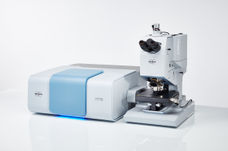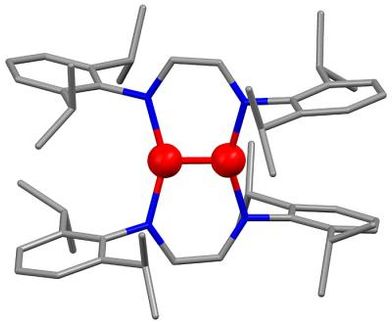Nobel Prize in Chemistry given to three scientists
Plastic that conducts electricity We have been taught that plastics, unlike metals, do not conduct electricity. In fact plastic is used as insulation round the copper wires in ordinary electric cables.Yet this year's Nobel Laureates in chemistry are being rewarded for their revolutionary discovery that plastic can, after certain modifications, be made electrically conductive.
Plastics are polymers, molecules that repeat their structure regularly in long chains. For a polymer to be able to conduct electric current it must consist alternately of single and double bonds between the carbon atoms. It must also be "doped", which means that electrons are removed (through oxidation) or introduced (through reduction). These "holes" or extra electrons can move along the molecule - it becomes electrically conductive.
Heeger, MacDiarmid and Shirakawa made their seminal findings at the end of the 1970s and have subsequently developed conductive polymers into a research field of great importance for chemists as well as physicists. The area has also yielded important practical applications. Conductive plastics are used in, or being developed industrially for, e.g. anti-static substances for photographic film, shields for computer screen against electromagnetic radiation and for "smart" windows (that can exclude sunlight). In addition, semi-conductive polymers have recently been developed in light-emitting diodes, solar cells and as displays in mobile telephones and mini-format television screens.
Research on conductive polymers is also closely related to the rapid development in molecular electronics. In the future we will be able to produce transistors and other electronic components consisting of individual molecules - which will dramatically increase the speed and reduce the size of our computers. A computer corresponding to what we now carry around in our bags would suddenly fit inside a watch…
***
Alan J. Heeger, 64, was born in 1936 in Sioux City, Iowa, USA (US citizen). He is Professor of Physics and Director of the Institute for Polymers and Organic Solids at the University of California at Santa Barbara. Alan G MacDiarmid, 73, was born in 1927 in Masterton, New Zealand (US citizen). He is Professor of Chemistry at the University of Pennsylvania. Hideki Shirakawa, 64, was born in 1936 in Tokyo (Japanese citizen). He is Professor of Chemistry at the Institute of Materials Science, University of Tsukuba, Japan.
The Prize amount, SEK 9 million, will be shared equally among the Laureates.
Most read news
These products might interest you

Eclipse by Wyatt Technology
FFF-MALS system for separation and characterization of macromolecules and nanoparticles
The latest and most innovative FFF system designed for highest usability, robustness and data quality

HYPERION II by Bruker
FT-IR and IR laser imaging (QCL) microscope for research and development
Analyze macroscopic samples with microscopic resolution (5 µm) in seconds

Get the chemical industry in your inbox
By submitting this form you agree that LUMITOS AG will send you the newsletter(s) selected above by email. Your data will not be passed on to third parties. Your data will be stored and processed in accordance with our data protection regulations. LUMITOS may contact you by email for the purpose of advertising or market and opinion surveys. You can revoke your consent at any time without giving reasons to LUMITOS AG, Ernst-Augustin-Str. 2, 12489 Berlin, Germany or by e-mail at revoke@lumitos.com with effect for the future. In addition, each email contains a link to unsubscribe from the corresponding newsletter.








































